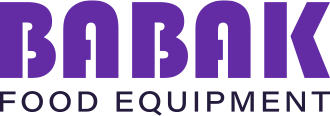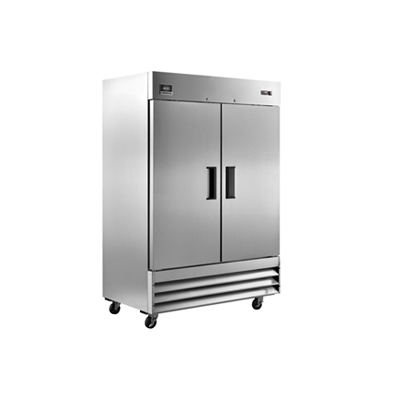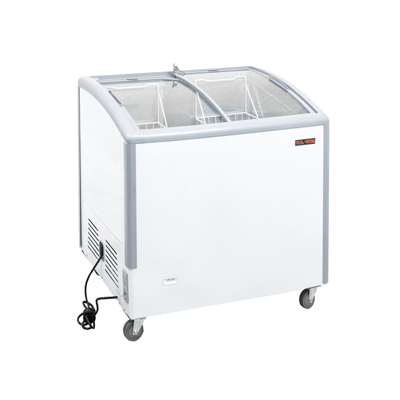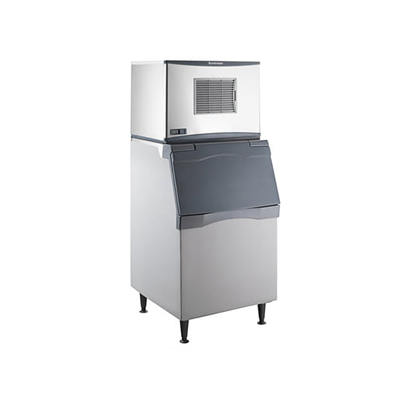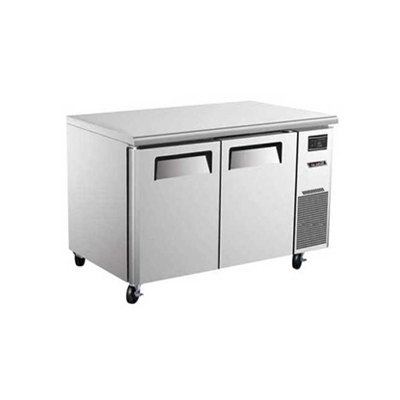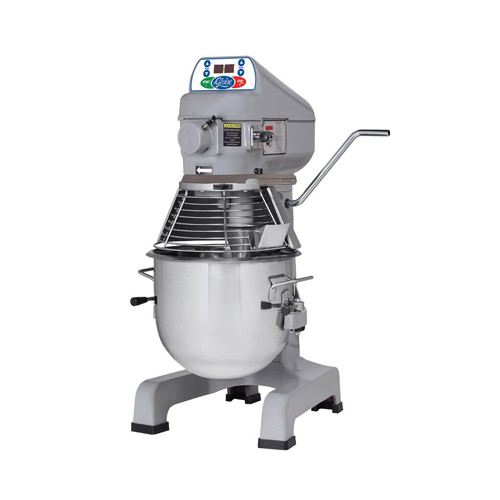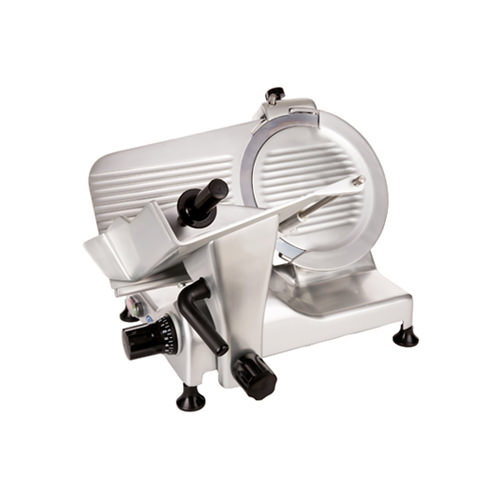Optimize Your Commercial Kitchen Workflow: Tips for Efficiency
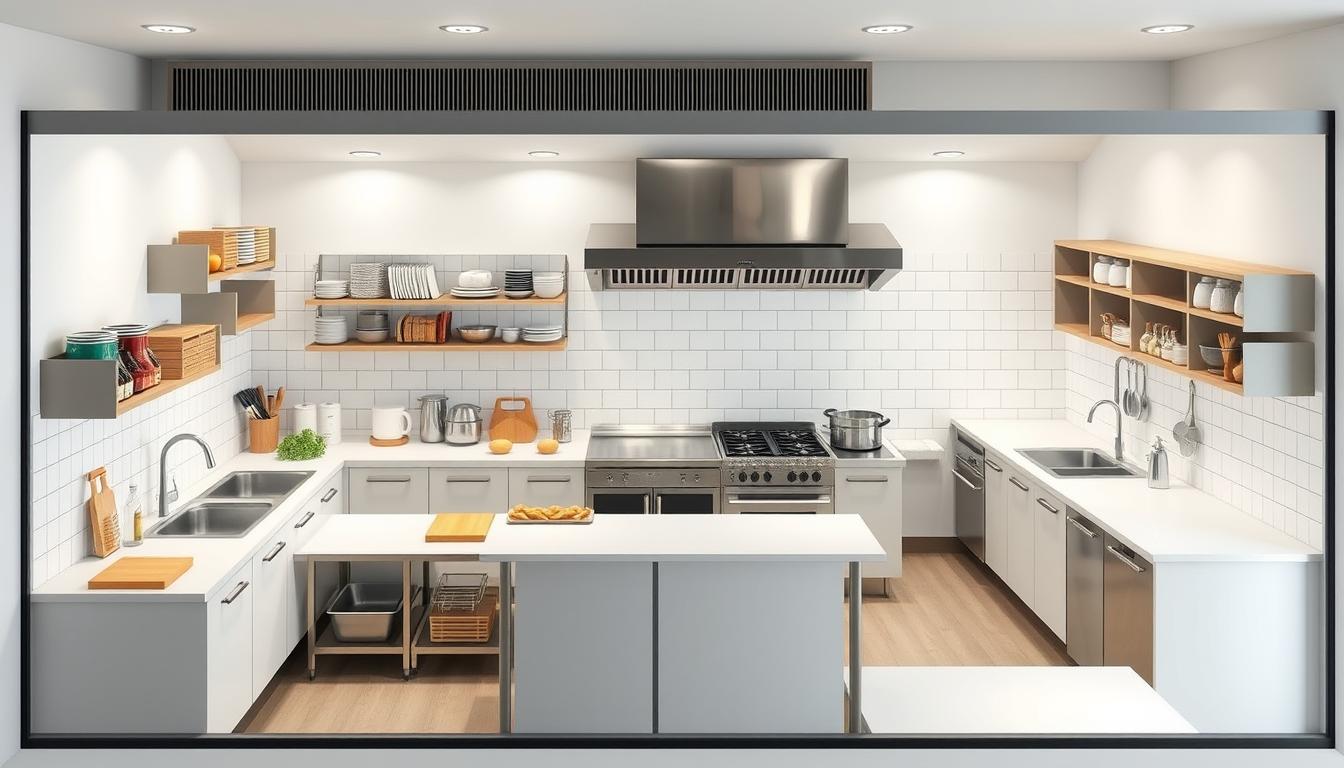
Did you know that up to 70% of construction waste can be reduced through modular, prefabricated kitchen designs? This surprising statistic highlights the transformative impact of optimizing your commercial kitchen workflow. For restaurant owners in Canada, a well-organized kitchen isn’t just about aesthetics—it’s about boosting efficiency, reducing costs, and enhancing customer satisfaction.
A streamlined workflow begins with state-of-the-art equipment and smart layout strategies. By dividing your kitchen into zones—hot and cold preparation, cooking, serving, and storage—you can minimize unnecessary movements and maximize productivity. Efficiency isn’t just a buzzword; it’s a cornerstone of profitable restaurant operations.
Ready to transform your kitchen? Whether you’re in Vancouver or Toronto, experts like those at Babak Food Equipment (604-566-9747) can guide you in selecting the right tools and strategies. From multi-functional appliances to vertical storage solutions, small changes can lead to significant improvements.
In this article, we’ll explore actionable tips to enhance your kitchen’s efficiency, from layout design to safety measures. By the end, you’ll have a clear roadmap to create a kitchen that works smarter, not harder.
Introduction to Commercial Kitchen Optimization
In today’s fast-paced culinary world, optimizing your kitchen is crucial for success. Food preparation and service have become more demanding, making efficiency essential.
Streamlining your food operations can significantly enhance your restaurant’s performance. A well-optimized setup ensures that every task, from preparation to service, is executed smoothly.
Here are some strategic approaches to boost your kitchen’s efficiency:
| Strategic Approach | Benefits |
|---|---|
| Zone Kitchen Layout | Optimizes task-specific zones for simultaneous dish preparation |
| Assembly Line Layout | Enhances speed for high-volume restaurants with limited menus |
| Island Kitchen Layout | Promotes effective communication and oversight among staff |
As the culinary industry evolves, maintaining high service standards is vital. Efficiency in food processes directly impacts customer satisfaction and operational success.
“An optimized kitchen is the backbone of any successful restaurant, ensuring that every dish served meets the highest standards.”
Understanding Your Commercial Kitchen Environment
Assessing the size and space constraints of your kitchen is the first step toward creating an efficient layout. Whether you’re running a fast-casual restaurant or a fine dining establishment, understanding your environment is key to optimizing operations.
Assessing Size and Space Constraints
Start by measuring your available space accurately. A well-organized layout can make even the smallest areas functional. Consider the following elements:
- Zone Kitchen Layout: Ideal for large operations, this setup divides the kitchen into task-specific zones, enhancing efficiency.
- Assembly Line Layout: Perfect for quick-service restaurants, this configuration speeds up output, as seen in chains like Chipotle.
- Galley Layout: Suitable for small spaces, such as food trucks, this layout maximizes limited areas effectively.
Adapting to Different Restaurant Models
Different restaurant models require tailored layouts. For instance:
- Fast-Casual: Benefits from an assembly line setup for quick service.
- Fine Dining: Often uses an open layout to enhance the dining experience.
- Ghost Kitchens: Focuses on delivery, requiring efficient storage and ingredient access.
Proper storage and space utilization are crucial. Strategies like vertical storage can increase capacity by up to 50%, ensuring efficient food preparation. Real-world examples, such as Sweetgreen’s use of modular designs, illustrate how adaptable layouts can enhance operations.
By understanding your kitchen’s unique needs and adapting your layout, you can create a space that supports your restaurant model, ensuring efficiency and productivity.
The Importance of a Strategic Kitchen Layout
A well-planned kitchen layout is the cornerstone of a productive and efficient workspace. By focusing on design elements that simplify workflow, you can create an environment that supports your daily operations seamlessly.
Designing with Workflow in Mind
Strategic kitchen design begins with understanding how tasks flow through your space. By minimizing unnecessary steps, you can enhance productivity and reduce errors. Here are some key principles to consider:
- Optimize Paths Between Workstations: Ensure that frequently used areas are easily accessible to save time and effort.
- Logical Layouts: Arrange equipment and tools to support the natural progression of tasks, from preparation to cooking and serving.
| Layout Style | Advantages |
|---|---|
| Zone Layout | Separates tasks into specific areas, improving organization and efficiency. |
| Assembly Line Layout | Streamlines high-volume production, ideal for quick-service environments. |
| Island Layout | Enhances communication and oversight among staff, promoting teamwork. |
By implementing these design principles, you can create a kitchen that operates smoothly and efficiently, supporting your team’s success.
Essential Commercial Kitchen Equipment
Equipping your kitchen with the right tools is vital for efficiency and productivity. Whether you’re running a small café or a large restaurant, having the right equipment can make all the difference.
New Equipment from Babak Food Equipment – Call 604-566-9747
Babak Food Equipment offers a wide range of high-quality, new cooking equipment designed to meet the demands of modern kitchens. Their selection includes everything from industrial ovens to energy-efficient refrigerators, ensuring your kitchen runs smoothly. By investing in new equipment, you benefit from better performance, longer durability, and improved safety standards.
Evaluating Used Equipment Options
If you’re on a budget, used kitchen equipment can be a cost-effective solution. However, it’s important to evaluate these options carefully. Look for equipment with a good maintenance history and ensure it meets current safety and health standards. Used equipment can be a smart choice, but it’s crucial to balance cost savings with long-term reliability.
High-performance cooking equipment not only enhances your workflow but also ensures consistent food quality. Tools like multi-functional appliances and vertical storage solutions can maximize your kitchen’s space and efficiency. Remember, the right equipment is an investment in your restaurant’s success.

For more information on selecting the right equipment for your needs, visit Babak Food Equipment. Their expertise can help you make informed decisions to optimize your kitchen’s efficiency and productivity.
Planning Your Kitchen for Food Preparation Efficiency
Planning your kitchen for food preparation efficiency starts with strategic counter and workstation placement. A well-organized setup can significantly enhance your food preparation tasks, ensuring that every step from ingredient preparation to plating is executed smoothly.
Optimizing Counter and Workstation Placement
Optimal counter and workstation placement is crucial for minimizing unnecessary movement and saving time. By arranging your stations to support the natural flow of food preparation, you can create a seamless workflow. For instance, placing preparation areas near sinks and cooking stations reduces back-and-forth movement, streamlining the process.
Dedicated sinks and preparation areas are essential for maintaining a smooth workflow. Designate specific zones for tasks like vegetable washing, meat preparation, and final plating to avoid cross-contamination and ensure efficiency. This approach not only improves safety but also speeds up food preparation.
Organizing your stations to support continuous food preparation tasks is key. Consider implementing a “clean as you go” philosophy to reduce cleaning time and improve hygiene. Modular workstations can increase flexibility, allowing your team to adapt to changing menu needs efficiently.
Real-life examples from the industry highlight the benefits of proper planning. For instance, a well-optimized kitchen layout can reduce food preparation time by approximately 25%. By applying these strategies, you can create a kitchen that operates efficiently, supporting your team’s success and enhancing customer satisfaction.
“A clean and efficient workspace is the foundation of a successful restaurant. By investing time in planning your kitchen layout, you can ensure that every task is performed with precision and care.”
By following these actionable tips, you can design a kitchen that supports your food preparation activities effectively, leading to operational excellence and customer satisfaction.
Smart Equipment Placement for Operational Success
Strategic equipment placement is the backbone of a well-oiled kitchen machine. By thoughtfully positioning your tools and appliances, you can significantly enhance your kitchen’s operational success and efficiency.
Integrating Critical Tools and Appliances
Positioning essential tools and appliances in the right locations is crucial for reducing delays. Imagine your kitchen as a well-choreographed dance—every piece of equipment should be placed to support the natural flow of tasks. This strategic approach ensures that your team spends less time moving between stations and more time on what matters most: preparing delicious food.
Creating an efficient flow is all about saving time, especially during peak hours. By placing high-traffic equipment like refrigerators and ovens in easily accessible locations, you can shave precious minutes off your food preparation time. This not only boosts productivity but also ensures that your kitchen runs smoothly, even when the pressure is on.
Technological tools can be a game-changer in monitoring and managing equipment usage. Smart appliances and automated inventory systems help you keep track of everything, from ingredient levels to equipment performance. These tools not only save time but also reduce waste and ensure that your kitchen operates at peak efficiency.
Aligning equipment placement with your kitchen’s workflow and service demands is key. Consider the specific needs of your restaurant—whether it’s a fast-casual spot or a fine dining establishment—and tailor your layout accordingly. For example, a fast-casual restaurant might benefit from an assembly line setup, while a fine dining kitchen might prioritize an open layout for a more interactive experience.
Finally, don’t forget to balance functionality with aesthetics. A kitchen that’s both efficient and visually appealing can boost staff morale and create a welcoming environment for your team. By integrating form and function, you can create a space that’s as beautiful as it is productive.
“A well-designed kitchen layout is not just about efficiency—it’s about creating an environment where your team can thrive.”

Effective Staff Training and Workflow Management
Empowering your team through effective training is essential for a smooth and efficient kitchen operation. Well-trained staff can handle tasks more effectively, leading to faster service and happier customers.
Implementing Cross-Training Strategies
Cross-training your kitchen staff and chefs allows them to handle multiple roles, ensuring your restaurant runs smoothly even during peak times. This approach not only boosts flexibility but also enhances teamwork.
| Benefit | Impact on Workflow |
|---|---|
| Improved Flexibility | Staff can cover multiple roles, reducing delays during busy periods. |
| Enhanced Teamwork | Creates a collaborative environment where everyone works together seamlessly. |
| Increased Efficiency | Reduces training time and allows for better allocation of resources. |
Studies show that cross-trained staff can manage up to 15% more orders without compromising quality. This not only improves efficiency but also customer satisfaction.
“A well-trained team is the heart of a successful kitchen, ensuring every dish is prepared to perfection and delivered on time.”
For more insights on enhancing your kitchen’s efficiency, visit Babak Food Equipment. Their expertise can help you optimize your kitchen’s workflow and productivity.
Creating Efficient Work Zoning in Commercial Kitchens
Efficient work zoning is essential for streamlining operations in any kitchen. By dividing your space into distinct areas for preparation, cooking, and cleaning, you can enhance productivity and safety. This approach ensures that each task has a dedicated space, reducing cross-traffic and improving overall efficiency.
Designing Prep, Cooking, and Cleaning Zones
A well-organized kitchen begins with separate zones for food preparation, cooking, and cleaning. The preparation zone should be equipped with ample counter space and tools for ingredient processing. The cooking zone should house your major appliances, such as ovens and stoves, while the cleaning zone should include sinks, dishwashers, and waste disposal areas.
Creating these distinct zones minimizes bottlenecks and improves hygiene. For example, keeping the cooking and cleaning areas separate reduces the risk of cross-contamination, ensuring a safer environment for food preparation.
Ensuring Clear Pathways for Movement
Clear pathways are crucial for efficient movement within your kitchen. By designing wide, obstacle-free aisles, you can ensure that staff can move easily between zones. This not only improves productivity but also reduces the risk of accidents caused by congestion or tripping hazards.
Real-world examples, such as the use of a zone layout in busy Canadian restaurants, demonstrate the benefits of well-defined kitchen zones. By synchronizing processes between different zones, you can create a smoother workflow that supports your kitchen’s overall efficiency.
| Zone Type | Key Features | Benefits |
|---|---|---|
| Preparation Zone | Counters, cutting tools, ingredient storage | Streamlines ingredient processing |
| Cooking Zone | Ovens, stoves, cooking utensils | Centralizes cooking operations |
| Cleaning Zone | Sinks, dishwashers, waste disposal | Maintains hygiene and safety |
By implementing these strategies, you can create a kitchen that operates efficiently, safely, and effectively, supporting your team’s success and enhancing customer satisfaction.
Commercial Kitchen Operation Best Practices
Running a successful kitchen operation requires more than just great food—it demands consistency, efficiency, and a well-maintained environment. By implementing best practices, you can ensure your service runs smoothly, your team stays productive, and your customers leave satisfied.
Standardizing Recipes and Procedures
Consistency is key in any kitchen. Standardizing your recipes and procedures ensures that every dish meets the same high standards, regardless of who’s preparing it. For example, a restaurant like McDonald’s owes much of its success to strict adherence to standardized recipes, ensuring customers get the same taste every time they visit.
By creating detailed recipe cards and training your staff to follow them, you can reduce preparation time and minimize errors. This approach not only boosts efficiency but also ensures that your menu items consistently meet customer expectations, leading to higher satisfaction rates.
Regular Equipment Maintenance Routines
Your equipment is the heart of your kitchen. Regular maintenance is crucial to prevent unexpected breakdowns and ensure everything runs smoothly. A well-maintained kitchen is not only more efficient but also safer for your staff.
Implementing a routine maintenance schedule can help you catch potential issues before they escalate. Simple tasks like cleaning vents, checking seals on refrigerators, and lubricating moving parts can make a big difference. According to industry experts, regular maintenance can reduce equipment malfunctions by up to 40%, ensuring your kitchen operation remains uninterrupted during peak hours.
| Best Practice | Benefits |
|---|---|
| Standardized Recipes | Ensures consistency in taste and portion sizes |
| Regular Equipment Checks | Prevents unexpected breakdowns and extends equipment lifespan |
| Staff Training | Improves efficiency and reduces errors |
By combining standardized procedures with regular maintenance, you can create a kitchen environment that’s both efficient and reliable. These practices not only enhance your service quality but also contribute to a safer and more productive workspace for your team.
Leveraging Technology for Streamlined Operations
Incorporating modern technology into your restaurant’s operations can significantly enhance efficiency and streamline processes. Advanced systems now allow for seamless coordination between front- and back-of-house operations, ensuring that orders are processed quickly and accurately.
Digital order management systems are a game-changer, reducing errors and improving speed. These systems often integrate with point-of-sale (POS) solutions, allowing staff to manage orders more efficiently. Real-time inventory and workflow monitoring technologies provide valuable insights, helping you track stock levels and optimize your workflow on the fly.
Technology also facilitates seamless communication among staff. For example, kitchen display systems ensure that everyone is on the same page, while mobile apps allow managers to monitor operations remotely. Case studies, such as the implementation of AI-powered systems by Yum! Brands, demonstrate how technology can lead to measurable operational improvements, including faster service and reduced errors.
| Technology Type | Benefits |
|---|---|
| Digital Order Management | Reduces errors, improves order accuracy |
| Real-Time Monitoring | Provides actionable insights, optimizes workflow |
| Kitchen Display Systems | Enhances communication, streamlines order processing |
When selecting technological tools, consider your restaurant’s specific needs. Focus on systems that integrate easily with your existing setup and offer scalability for future growth. For more insights on implementing technology in your restaurant, visit this resource.

Energy Efficiency and Sustainability in the Kitchen
As the culinary world evolves, embracing energy efficiency is no longer optional—it’s mandatory for sustainable success. By investing in energy-efficient appliances and sustainable practices, you can significantly reduce operational costs and environmental impact while enhancing your brand’s reputation.
Investing in Energy-Efficient Appliances
Energy-efficient appliances offer numerous benefits, including lower energy bills and a reduced carbon footprint. These eco-friendly solutions not only contribute to a positive brand image but also ensure compliance with environmental regulations, which can attract eco-conscious customers and boost your reputation.
- Identify Appliances with Energy Star Ratings: Look for appliances certified by Energy Star, which indicates they meet energy efficiency standards set by the U.S. Environmental Protection Agency.
- Consider Long-Term Savings: While energy-efficient appliances may have a higher upfront cost, they often lead to significant savings over time through reduced energy consumption.
- Conduct an Energy Audit: Assess your current energy usage to identify areas where improvements can be made. This can help you prioritize investments in energy-efficient equipment.
For instance, high-efficiency dishwashers can use up to 25% less water and energy compared to traditional models. Programmable thermostats can also result in energy savings of 10-15% by optimizing heating and cooling based on operational needs.
Real-world examples, such as Canadian restaurants adopting green solutions, demonstrate the tangible benefits of sustainable practices. These practices not only reduce energy costs but also align with growing consumer expectations for environmentally responsible businesses.
By integrating energy-efficient appliances and sustainable practices, you can create a kitchen that operates efficiently, safely, and sustainably, supporting long-term success and contributing to a greener future.
Optimizing Commercial Kitchen Workflow for Peak Efficiency
Streamlining your kitchen’s workflow is essential for achieving peak efficiency and productivity. By aligning your strategies with your kitchen’s unique needs, you can create a seamless process that enhances overall performance. This section will explore how to optimize your workflow, manage busy periods, and maintain a productive operational rhythm.
Optimizing workflow directly impacts productivity by reducing unnecessary steps and improving task execution. For instance, a well-structured layout can minimize movement during peak times, saving valuable minutes. Efficient procedures ensure that your team can handle high-volume orders without stress, maintaining quality and customer satisfaction.
Aligning workflow strategies with your kitchen’s specific requirements is crucial. Consider your menu, staff size, and equipment when designing your workflow. For example, a fast-casual restaurant might benefit from an assembly-line setup, while a fine dining establishment could prioritize an open layout for better communication and oversight.
Streamlining procedures offers multiple benefits. It allows your team to manage busy periods more effectively, reducing delays and errors. For example, a well-optimized layout can cut food preparation time by up to 30%, while streamlined workflows can increase staff productivity by approximately 20%. These improvements not only enhance efficiency but also contribute to a safer and more organized workspace.
Case studies illustrate the measurable improvements in efficiency. For example, a restaurant that implemented a zone layout reduced its food preparation time by 25%. Another establishment that introduced smart storage solutions increased its space utilization by 40%, leading to faster service and higher customer satisfaction.
The interconnectedness of layout, equipment placement, and staff coordination is vital for driving workflow. Strategic placement of high-traffic equipment, such as refrigerators and ovens, can shave precious minutes off food preparation time. Additionally, investing in multi-functional appliances and vertical storage solutions can maximize space and efficiency.
Finally, maintaining an optimized operational rhythm requires continuous monitoring and adjustments. Regular equipment maintenance, staff training, and process reviews ensure that your kitchen remains efficient and productive. By implementing these strategies, you can create a kitchen that operates smoothly, supporting your team’s success and enhancing customer satisfaction.

Boosting Profitability Through Strategic Kitchen Design
Strategic kitchen design is more than just about aesthetics—it’s a powerful tool to boost profitability. By investing in a well-thought-out layout and the right equipment, you can create a space that enhances efficiency, reduces costs, and improves customer satisfaction.
A well-optimized layout doesn’t just save time; it also enhances the dining experience. For instance, an open layout can make your restaurant feel more inviting, encouraging customers to linger and order more. This approach has proven successful for many Canadian restaurants, where a reconfigured design led to a 20% increase in profitability.
Balancing aesthetics with functionality is crucial. A visually appealing kitchen design can boost staff morale and create a welcoming environment. For example, incorporating natural lighting and modern finishes can make your restaurant more attractive to customers, indirectly driving sales.
Data shows that smart investments in design can lead to long-term cost savings. For instance, energy-efficient equipment can reduce utility bills by up to 15%, while a well-planned layout can cut food preparation time by 30%, allowing you to serve more customers during peak hours.
When planning your redesign, consider consulting with experts to ensure your layout aligns with your restaurant’s unique needs. Prioritize flexibility and functionality to create a space that adapts to changing demands, ensuring long-term profitability and success.
Keeping Your Kitchen Safe and Compliant
Maintaining a safe and compliant environment is crucial for the success of any food service business. Health and safety regulations are in place to protect both your staff and customers, ensuring a safe and hygienic space for food preparation and service.
Adhering to Health and Safety Regulations
Canadian health and safety regulations are stringent to ensure that food service businesses operate safely. Key regulations include proper food storage, waste disposal, and cleanliness protocols. Compliance with these regulations not only prevents legal issues but also enhances your reputation and customer trust.
Regular audits and staff training are essential to maintain high safety standards. Ensuring that all employees understand and follow safety protocols can significantly reduce workplace accidents and ensure customer safety.
Impact of Compliance on Staff Wellbeing and Customer Safety
A safe working environment boosts staff morale and productivity. When staff feel safe, they are more efficient and provide better service. Customers also benefit from a safe environment, as it ensures the food they consume is prepared and handled safely.
Checklist of Safety Protocols and Regular Compliance Tasks
- Conduct daily cleaning and sanitization of all surfaces and equipment.
- Ensure proper food storage and handling to prevent contamination.
- Regularly inspect and maintain all kitchen equipment to prevent hazards.
- Provide ongoing training for staff on safety protocols and emergency procedures.
Role of Ongoing Training and Equipment Checks
Training is a cornerstone of safety. Regular training sessions ensure that staff are up-to-date with the latest safety protocols. Equipment checks prevent malfunctions and hazards, ensuring a smooth operation.
Risks of Non-Compliance
Non-compliance can lead to severe consequences, including fines and potential closure. For instance, failing to meet health standards can result in penalties ranging from $500 to $10,000, depending on the severity of the violation.
Practical Tips for Audits and Reviews
Regular audits help identify and address safety issues before they become problems. Review safety procedures regularly and update them as needed to ensure they remain effective.
“A safe and compliant kitchen is not just a legal requirement—it’s a commitment to the well-being of your staff and customers, ensuring a trusted and reputable food service environment.”

By following these guidelines and maintaining a focus on safety and compliance, you can create a secure and efficient kitchen environment that supports your team and satisfies your customers.
Gathering Insights from Customer Feedback and Trends
Customer feedback is a goldmine for restaurants, offering insights that can refine menu offerings and enhance the overall customer experience. By listening to your patrons, you gain valuable perspectives that help tailor your services to meet their expectations, ensuring satisfaction and loyalty.
To gather actionable insights, restaurants can use various methods. Digital surveys and review platforms like Yelp provide direct feedback, while engaging customers during their visits encourages real-time insights. These approaches help identify trends, such as the demand for healthier menu options or faster service, allowing you to adapt and improve.
Current trends show that menu design is evolving to include more diverse and health-conscious options. For instance, a family-owned diner expanded its menu to attract new demographics, boosting revenue. Service models are also adapting, with some restaurants improving efficiency based on feedback about wait times during peak hours.
Examples of successful brands using feedback include a fast-casual chain that enhanced service speed after addressing customer concerns. Such strategies not only improves operations but also demonstrate a commitment to customer satisfaction, fostering loyalty and positive word-of-mouth.
The link between customer experience and business success is clear. Happy customers tend to spend more and return frequently, driving revenue and growth. By leveraging feedback, restaurants can refine their offerings and services, ensuring a positive experience that keeps customers coming back.
In conclusion, integrating customer feedback is crucial for continuous improvement. By staying attuned to patron insights and adapting to trends, restaurants can enhance their menu design, service quality, and overall customer experience, ultimately driving long-term success and satisfaction.
Conclusion
In conclusion, optimizing your restaurant kitchen is a multifaceted process that requires careful planning and continuous improvement. By implementing the strategies discussed throughout this article—such as strategic layout design, smart equipment placement, and effective staff training—you can create a workspace that operates seamlessly and efficiently. Remember, efficiency is not a one-time achievement but an ongoing process that evolves with your operations.
Take the next step by evaluating your current setup and identifying areas for improvement. Whether it’s upgrading to energy-efficient appliances or adopting new technologies, data-driven decisions will guide you toward a more efficient and profitable operation. For tailored solutions, explore Babak Food Equipment, your partner in transforming your kitchen into a hub of productivity and innovation.
Use these insights as a stage for ongoing growth. By prioritizing strategic design, investing in high-performance equipment, and fostering a culture of continuous improvement, your restaurant kitchen will be empowered to succeed in an ever-changing culinary landscape. The journey to operational excellence is never truly finished—it’s a continuous pursuit that drives long-term success.
